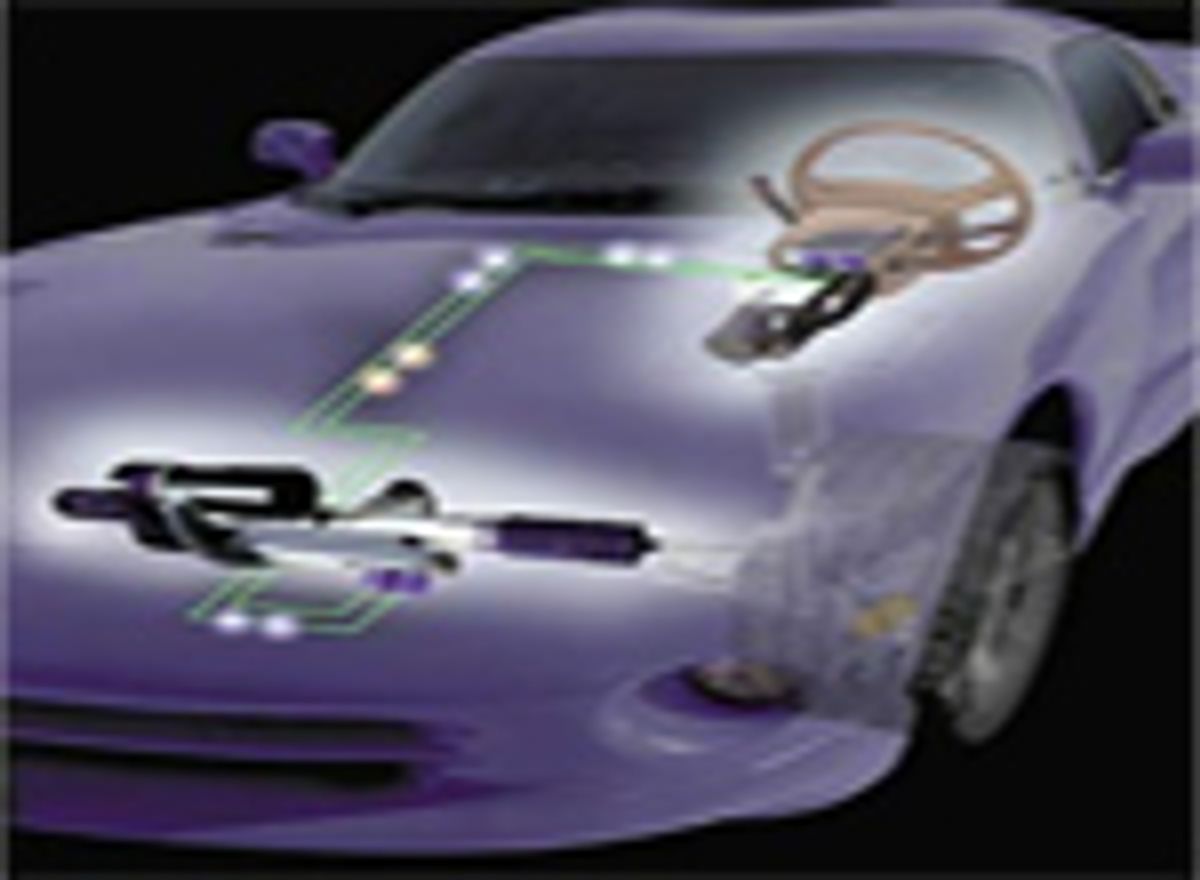Automotive manufacturers have been testing out vehicle “drive-by-wire” systems for quite some time now. Spectrum’s Elizabeth Bretz, for instance, wrote about the technology way back in April 2001. However, for the most part, drive-by-wire has been taking the scenic route in going from “coming soon to a car near you” to standard vehicle technology. It may finally have the finishing line in sight.
Yesterday, Nissan announced that it was going to be introducing "steer-by-wire" in select Infiniti models next year, along with an autonomous emergency steering system sometime within the next three to five years. Nissan claims that its steer-by-wire system—an “independent control steering technology that controls tire and steering angles inputs independently”—is the first to be introduced in mass produced automobiles.
Nissan’s press release states that, “A conventional steering system directs tire movements by transmitting steering inputs to the tires via a mechanical link. Nissan's next-generation steering technology reads the driver's intentions from steering inputs and controls the vehicle's tire movements via electronic signals. This transmits the driver's intentions to the wheels even faster than a mechanical system and increases the direct driving performance feel by quickly and intelligently communicating road surface feedback to the driver.”
To help keep the automobile on track, Nissan is placing a camera in the rearview mirror which helps analyze “the road ahead, recognizes the lane direction, detects changes in the vehicle's direction, and transmits this information to multiple electronic control units as electronic signals. If a discrepancy occurs, the system acts to reduce the discrepancy by controlling the opposing force to the tire angle. By reducing the frequency of detailed steering input adjustments, which are a cause of fatigue on long drives, the driver's workload is greatly reduced.”
The system will have redundant electronic control units (ECUs) so that, “In the event a single ECU malfunctions, another ECU will instantly take control, and in extreme circumstances such as the power supply being disrupted, the backup clutch will act to connect the steering wheel and wheels mechanically, ensuring continued safe travel.”
A YouTube video on the steer-by-wire system (below) indicates that along with the camera system, there are a total of three ECUs that are managing the steer-by-wire system.
Nissan’s autonomous emergency steering system will use the information from “the front-mounted radar and camera, the two left and right rear radars, and … five laser scanners attached around the vehicle” to determine whether there are any collision risks that can’t be avoided by braking which need to be mitigated. Furthermore, the system simultaneously checks to determine whether “there is a forward zone free of obstacles and that there are no vehicles approaching from the rear, and then displays to the driver the direction that the vehicle should be steered. If the driver cannot immediately steer in that direction, the system takes over to automatically steer the vehicle to help avoid a collision.”
Nissan has published a more detailed paper (pdf) of how the system works, as well as another video that shows the system in action on a test track.
It is hard to tell how much information is being used from Nissan’s “all around view” technology that utilizes 4 super-wide angle cameras to give a driver better situational awareness when parking or backing up, but I assume that some of it is being used in the autonomous emergency system above. Anyone have more insight into this?
In addition, anyone know what happens with the steer-by-wire system when the camera input is blocked, say by heavy, wet snow on the windshield? Or do Nissan windshields have cleaning technology to always keep that area clear, regardless of weather or other debris (like bird droppings) ending up there?
I'm also curious about projected repair costs for the steer-by-wire system compared to the mechanical system it is replacing. Again, anyone have a clue on the cost comparison?
Illustration: Delphi Automotive Systems Corp.
Robert N. Charette is a Contributing Editor to IEEE Spectrum and an acknowledged international authority on information technology and systems risk management. A self-described “risk ecologist,” he is interested in the intersections of business, political, technological, and societal risks. Charette is an award-winning author of multiple books and numerous articles on the subjects of risk management, project and program management, innovation, and entrepreneurship. A Life Senior Member of the IEEE, Charette was a recipient of the IEEE Computer Society’s Golden Core Award in 2008.



